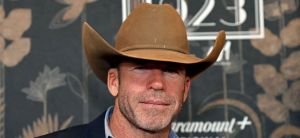Two weeks after testing positive for the coronavirus, Senior White House adviser Hope Hicks returned to the campaign trail Thursday with President Donald Trump. Hicks, one of the president’s closest aides, joined the president on his two-day trip to North Carolina and Florida in his final push to rally voters ahead of the November election.
According to the Daily Mail, Hicks was spotted leaving the White House with the president and other staff Thursday afternoon without a face covering as she boarded Marine One on the South Lawn and later as she boarded Air Force One at Joint Base Andrews. Face coverings have been recommended by the Centers for Disease Control and Prevention (CDC). However, they have been downplayed by the Trump administration, with Trump recommending, but not required, that his supporters wear them at his rallies. Republican National Committee Chairwoman Ronna McDaniel, who also tested positive for the virus, was also on the trip.
Videos by PopCulture.com
The Thursday trip marked Hicks’ first public appearance since her positive diagnosis, though it is unclear when she returned to work. Hicks tested positive for COVID-19 on Oct. 1, just a day after she began feeling ill when she was in Minnesota with the president. As a precaution, she had quarantined herself on Air Force One when she flew back with Trump and White House staff. However, her diagnoses set off a chain reaction at the White House, with Trump and First Lady Melania Trump announcing that they, too, had tested positive just after midnight on Oct. 2. Melania recently revealed that their 14-year-old son Barron also tested positive.
The first lady, in a recent post opening up about her experience with the virus, said that while her symptoms were “minimal,” they hit her “all at once and it seemed to be a roller coaster of symptoms in the days after.” She said that she “experienced body aches, a cough and headaches, and felt extremely tired most of the time.” Barron, she said, experienced no symptoms. Meanwhile, the president was hospitalized at Walter Reed Medical Center for several days after he experienced a fever and low oxygen levels.
In the wake of the consecutive diagnoses, which have extended to dozens of others, the Trump administration has faced increased scrutiny over its handling of the pandemic, which has resulted in more than 215,000 deaths in the U.S. Just 10 days after his diagnoses, the president returned to the campaign trail, despite a recommended 14-day quarantine. The White House has argued that 10 days is sufficient. The president has since filled his schedule with campaign rallies.








